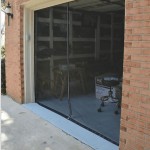Converting A Garage Into A Room: Understanding Planning Permission
Converting a garage into a habitable room, such as a bedroom, living room, or office, is a popular home improvement project. This conversion maximizes existing space, potentially adding value to a property. However, before commencing any work, it is crucial to understand the planning permission requirements and building regulations that govern such alterations. Failing to comply with these regulations can lead to enforcement notices, costly rectification work, and potential legal issues when selling the property.
The need for planning permission for a garage conversion largely depends on the extent of the proposed works and the specific circumstances of the property. Broadly speaking, many garage conversions, particularly those that are internal and do not alter the external appearance of the garage, fall under permitted development rights. Permitted development rights allow homeowners to carry out certain types of development without needing to apply for planning permission. However, these rights are subject to limitations and conditions, and it is essential to verify whether a proposed conversion falls within these parameters.
This article aims to provide a comprehensive overview of the planning permission requirements associated with garage conversions, guiding homeowners through the key considerations and helping them navigate the regulatory landscape.
Assessing Whether Planning Permission is Required
The first step in determining whether planning permission is needed for a garage conversion is to assess the scope of the project. Planning permission is more likely to be required if the conversion involves any of the following:
*External Alterations:
Changing the external appearance of the garage significantly, such as altering or removing the garage door and replacing it with a window or brick wall, extending the garage outwards, or changing the roof structure. *Change of Use:
Altering the primary use of the garage to something other than incidental storage or parking. This is particularly relevant if the new use could generate significant traffic, noise, or disturbance to neighbors. *Listed Buildings or Conservation Areas:
Properties located in listed buildings or conservation areas are subject to stricter planning controls. Any alterations, even those that would normally fall under permitted development, may require planning permission in these areas. *Covenants or Restrictions:
Some properties may have covenants or restrictions that prevent certain types of development, including garage conversions. These restrictions are typically found in the property deeds and should be checked before starting any work. *Loss of Parking:
If the conversion results in the loss of off-street parking, the local planning authority may require planning permission, particularly if parking is already limited in the area. *Impact on Neighbouring Properties:
Conversions that may significantly impact neighbouring properties, such as blocking light or causing overlooking, are more likely to require planning permission.If any of these factors apply, it is advisable to contact the local planning authority to discuss the proposed conversion and determine whether planning permission is required. They can provide specific guidance based on the individual circumstances of the property and the proposed works.
If the conversion is considered permitted development, it is still recommended to obtain a Certificate of Lawful Development from the local planning authority. This certificate provides formal confirmation that the works are lawful and do not require planning permission. It can be particularly useful when selling the property in the future, as it provides evidence of compliance with planning regulations.
Understanding Permitted Development Rights for Garage Conversions
Permitted development rights for garage conversions are governed by the Town and Country Planning (General Permitted Development) (England) Order 2015 (as amended). This order sets out the types of development that can be carried out without needing to apply for planning permission.
For a garage conversion to qualify as permitted development, it must meet certain conditions, including:
*No Increase in Footprint:
The conversion must not involve any extension to the existing garage footprint. *Materials Matching:
Any external alterations, such as replacing the garage door with a wall or window, should be carried out using materials that are similar in appearance to those of the existing building. *No Change to Roof Height:
The conversion must not involve any increase in the height of the garage roof. *Not a Separate Dwelling:
The converted garage must remain part of the main dwelling and cannot be used as a separate self-contained unit. *Compliance with Building Regulations:
Even if planning permission is not required, the conversion must still comply with building regulations, which cover aspects such as structural stability, fire safety, insulation, and ventilation. *Limitations in Designated Areas:
Permitted development rights are often restricted in designated areas such as conservation areas, Areas of Outstanding Natural Beauty (AONB), and National Parks. *Article 4 Directions:
Local planning authorities can issue Article 4 Directions, which remove permitted development rights in specific areas or for certain types of development. These directions are typically used to protect the character of an area.It is crucial to carefully review the permitted development rules and consult with the local planning authority to ensure that the proposed conversion meets all the necessary conditions. Failure to comply with these conditions could result in enforcement action.
The Planning Permission Application Process
If planning permission is required for a garage conversion, the homeowner must submit a formal planning application to the local planning authority. This process involves several steps:
*Pre-Application Advice:
It is highly recommended to seek pre-application advice from the local planning authority before submitting a formal application. This involves discussing the proposed conversion with a planning officer and obtaining feedback on the likelihood of it being approved. Pre-application advice can help identify any potential issues and allow the homeowner to modify the plans accordingly, increasing the chances of a successful application. *Preparing the Application:
The planning application must include detailed plans and drawings of the proposed conversion, including elevations, floor plans, and a site plan showing the location of the garage and its relationship to the surrounding properties. The application must also include a description of the proposed works and any supporting information, such as a design and access statement. *Submitting the Application:
The completed application and supporting documents must be submitted to the local planning authority, along with the appropriate fee. Applications can typically be submitted online or by post. *Public Consultation:
Once the application has been submitted, the local planning authority will carry out a public consultation, notifying neighbours and other interested parties of the proposed development. This allows them to submit comments or objections to the application. *Assessment by the Planning Authority:
The planning authority will assess the application, taking into account the development plan, national planning policy, and any comments received during the public consultation. They will also consider factors such as the impact on the character of the area, the amenity of neighbouring properties, and highway safety. *Decision:
The planning authority will then make a decision on the application, either approving it, refusing it, or approving it with conditions. If the application is approved with conditions, the homeowner must comply with these conditions when carrying out the conversion. *Appeals:
If the application is refused, the homeowner has the right to appeal the decision to the Planning Inspectorate. The Planning Inspectorate is an independent body that hears appeals against planning decisions.Navigating the planning permission process can be complex, and it is often advisable to seek professional advice from a planning consultant or architect. They can help prepare the application, liaise with the local planning authority, and represent the homeowner in any appeals.
In addition to planning permission, it is essential to ensure that the garage conversion complies with building regulations. Building regulations cover aspects such as structural stability, fire safety, insulation, ventilation, and drainage. A building control body, either the local authority building control department or an approved independent inspector, must inspect the conversion work to ensure that it meets these regulations. Failure to comply with building regulations can result in enforcement action and costly rectification work.

Garage Conversions Convert To Bedroom Do I Need Planning Permission

Do You Need Permission To Turn A Garage Into Room

Can I Convert A Garage To Room

Converting Your Garage Into A Room Can Boost House By 45 000 And You Don T Need Planning Permission The Sun

Converting Your Garage Into Extra Living Space

Garage Conversions A Beginner S Guide My Home Extension

Converting A Garage To Create Living Space What Consider Xtraspace Self Storage Business

I Want To Convert Our Garage And Put In A Shower Room Do Need Planning Permission Daily Mail

Converting Your Garage For Business Use All You Need To Know

Do You Need Planning Permission For A Garage Conversion Highline Design Build
Related Posts








